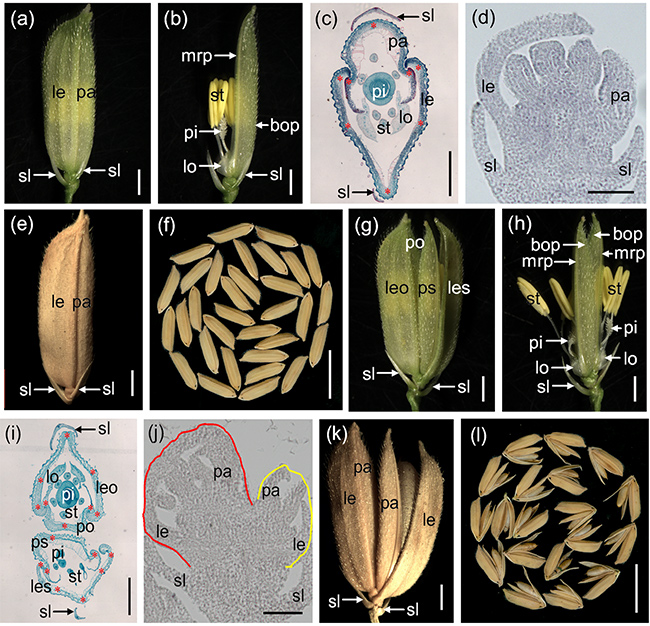






Recently, the research on rice floret number was achieved by a research team led by Professor Qian Qian from China National Rice Research Institute of Chinese Academy of Agricultural Sciences. The paper “Two-florets spikelet” as a novel resource has the potential to increase rice yield analyzed the regulation of floret number in rice, which laid a foundation for molecular breeding of rice high production.
The grain number per panicle (floret number) is an important factor of grain yield. Presently, it is difficult to increase the grain number by increasing the branch number or grain density in China, so it is necessary to find new ways to increase the grain number per panicle. In fact, another important factor (floret number in a single spikelet) which controlled the grain number per panicle was rarely focused because a normal rice spikelet has one fertile floret and produces one seed.
We characterized the double floret1 (df1) mutant which developed two florets inside one pair of sterile lemma. By map-based cloning, DF1 encodes a lipase, has lipase activity, and regulates the spikelet determinacy. Our findings revealed that DF1 plays a key role in the regulation of spikelet determinacy. Inducing a switch to indeterminacy in the spikelet meristem or prolonging the activity of the spikelet meristem with mutated DF1 may provide a new means to develop rice cultivars with multi-florets spikelet for increasing grain number per panicle. This provided a new perspective for increasing grain number per panicle and yield.
Dr. Ren Deyong and PhD. student Yu Haiping are co-first authors of this study, which was supported by the National Natural Science Foundation of China. The research finding has been published in Plant Biotechnology Journal online on October 11, 2017 (DOI: 10.1111/pbi.12849). More details are available on the following link: http://onlinelibrary.wiley.com/doi/10.1111/pbi.12849/full

· FED:a web tool for foreign element detection of genome-edited organism
· The C2H2 zinc-finger protein LACKING RUDIMENTARY GLUME 1 regulates spikelet development in rice
· A strigolactones biosynthesis gene contributed to the Green Revolution in rice
· Natural variation in the promoter of TGW2 determines grain width and weight in rice
CNRRI Today
Copyright © 2014- China National Rice Research Institute